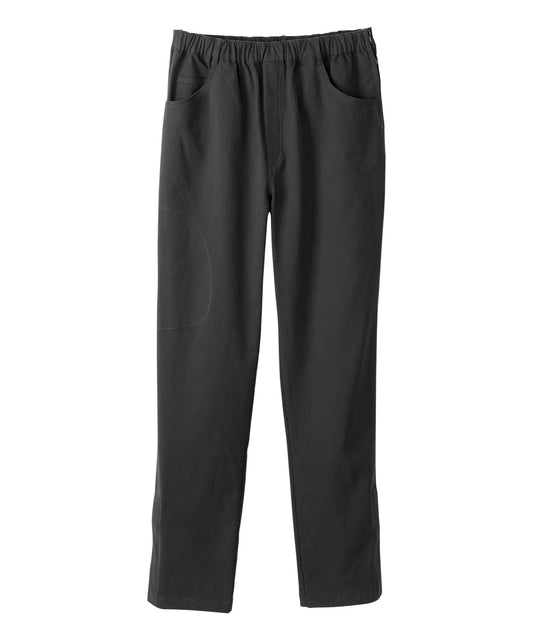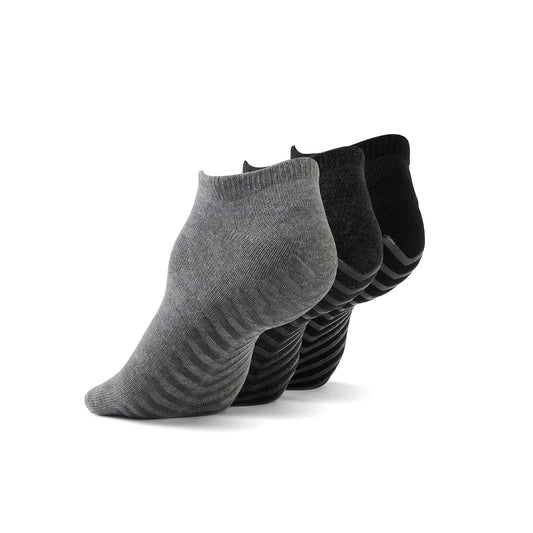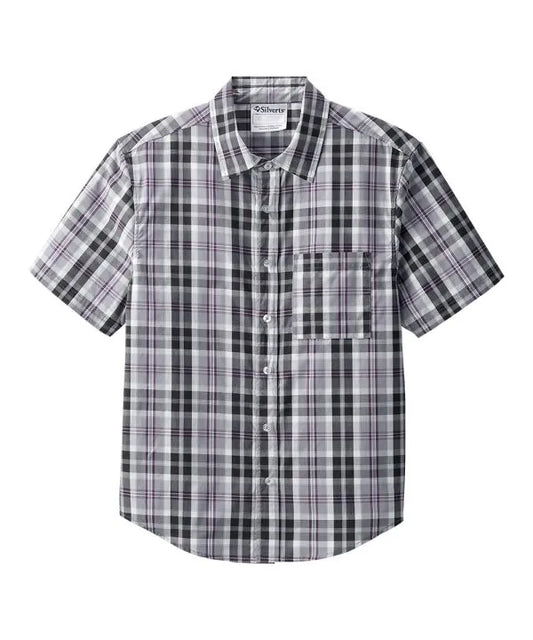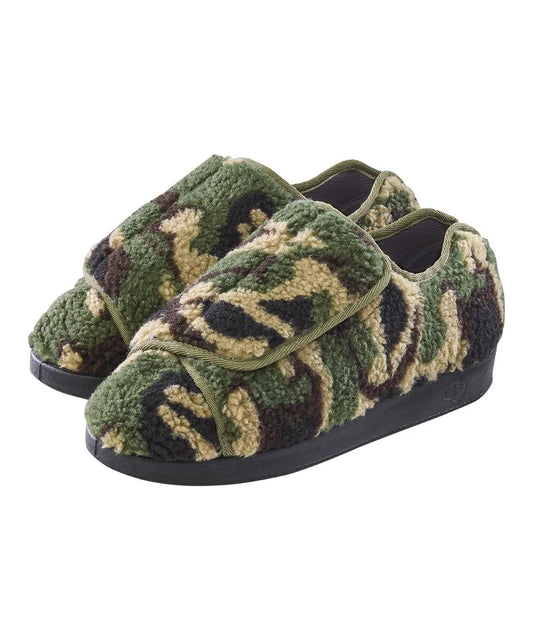Author: Harshil Shah
Adaptive clothing isn’t hype—it’s help. Across Canada and the U.S., people are connecting with it for deeply personal reasons. From icy commutes in Calgary to over-air-conditioned offices in Texas, one truth is clear: clothing that makes life easier isn’t a luxury. It’s essential.
But how each country experiences adaptive fashion is shaped by culture, climate, and daily routine. Some love the function. Some love the flair. And some just really appreciate not having to wrestle with buttons before coffee.
Here’s how North Americans are falling—quietly but completely—in love with adaptive wear.
“Adaptive clothing Canada: Do they love us for the maple-syrup jokes?”
Let’s be honest—Canadians don’t buy jackets because of a syrup pun. But they do appreciate practicality, and they like a brand that doesn’t take itself too seriously.
Most Canadian shoppers tell us the same thing: “If it works in the cold, I’m in.” That’s why the Men’s Sherpa Lined Jacket with Magnetic Buttons continues to be a favorite from Vancouver’s rain to Winnipeg’s chill. One Calgary customer told us, “This thing makes 6 a.m. dog walks bearable—even when I forget gloves.”

Canadian winters are a full-body experience. For folks managing arthritis, dexterity loss, or using mobility aids, small things like pulling a zipper can become big barriers. Magnetic closures change that. What used to take minutes now takes seconds—and doesn’t require perfect grip strength.
We also hear stories we never expected: someone shoveling snow with a toddler strapped to their back, someone else rushing to catch the paratransit van, and even one older couple who bought matching Sherpas for “park strolls and porch beers.”
These aren’t fashion statements. They’re freedom statements.
“American sizing vs. the world: Who’s the real villain?”
Let’s not sugarcoat it—American sizing can feel like chaos. You order your “usual,” and it either swallows you whole or fits like a wetsuit. Now add adaptive needs—wheelchair clearance, post-op swelling, prosthetics—and you’ve got a real problem.
That’s why we overhauled the way we do sizing.
The Women’s Reversible Front Vest with Magnetic Closure was a major milestone. It’s roomy without looking bulky, and its stretch side panels flex with your body. One Florida customer recovering from shoulder surgery told us, “It was the first time I felt like I could dress myself and look normal doing it.”

Meanwhile, Canadians are more precise. Tape measures come out. Parents call our customer service line with exact limb dimensions. We respect that.
To help both groups, we introduced a live video fit line—real occupational therapists who guide you through measuring, choosing, and adjusting pieces. We also made our sizing charts ultra-clear and added fit feedback from real customers across a range of body types.
“Why Texans buy our thermal leggings (yes, really).”
When people hear “thermal,” they picture snow—and immediately exclude states like Texas or Florida. But context is everything.
In places like Dallas and Houston, the Recovery Pants with Side Snaps for Post-Surgery aren’t for blizzards. They’re for overly chilled workplaces, sudden cold snaps, or post-surgery comfort in drafty homes.

Texans describe them as “a hug, but breathable.” The leggings wick moisture and regulate temperature, so they’re great for lying on the couch after a procedure or running errands when the A/C is cranked to Arctic.
One Austin customer recovering from a C-section said, “They didn’t squeeze my incision, but they still held everything in. I even wore them to my post-op.”
Meanwhile, up north, Canadians are layering them under ski pants or winter dresses. Same leggings, different battles. Texans love it for “freezer aisle” grocery runs. Manitobans? Spring thaw walks. Same shirt. Same ease. Different use.
“Do Canadians actually gatekeep our winter gear?”
Yes—and we love them for it. Canadians don’t mess around with winter.
Our Men’s Sherpa Shacket was practically built by the Prairies. Thick storm flaps, waterproof magnetic zippers, and extra-large pull tabs are all there for one reason: winter waits for no one.

We heard from a man in rural Saskatchewan who said, “I’ve been wearing the same coat for 12 years. This is the first one that felt like it understood me.” It kept him dry, helped him dress one-handed after shoulder surgery, and—bonus—didn’t look like medical wear.
You won’t find fluffy fake fur or pointless drawstrings. Our gear is built for real weather and real wearers, with or without a disability label.
Inclusive Fashion in America: How We’re Beating the ‘Vanilla’ Brands
Let’s be real—most adaptive fashion still feels like an afterthought. Too often it’s muted, medical-looking, or worse: it screams “functional” but whispers nothing about the person wearing it. When brands treat adaptive design as a box to tick rather than a voice to listen to, they miss the point entirely.
We do things differently. Our design process starts with real people. We sit down with individuals from all walks of life—parents managing chaotic mornings, teens navigating sensory sensitivities, veterans recovering mobility, and athletes pushing boundaries in wheelchairs. They’re not a “niche” to us—they’re the blueprint.
From those conversations come the details that matter: seams that don’t scratch, closures that don’t frustrate, and silhouettes that make people feel good when they look in the mirror. We don’t just ask what’s wrong with traditional clothing—we ask what people actually want. The result is adaptive fashion that doesn’t blend in—it speaks up. And it looks good doing it.
We’ve seen firsthand how something as small as changing a closure or adjusting a hemline can change someone’s day. People tell us they finally feel seen. That they dressed themselves without help for the first time in years. That a coworker noticed the style—not the struggle.
And it’s not just about the clothes. It’s about confidence. At our community sessions in cities across the U.S., people come in nervous and leave with their shoulders back, feeling like themselves again. They ask questions. They swap stories. They laugh about how long it took to find something that fits and feels right.
What makes inclusive fashion powerful is that it doesn’t compromise. It’s not either function or fashion—it’s both, always. And it proves that when clothing adapts to people, not the other way around, it’s not just clothing anymore. It’s freedom, pride, and a little bit of everyday magic.
Adaptive Clothing Myths—Let’s Bust a Few
“It ruins machines.”
Nope. Good adaptive gear is built to last through life and laundry. You don’t need to baby it.
“It’s just for hospitals.”
Wrong again. It may have started in clinical settings, but today, adaptive wear belongs on the subway, in classrooms, at weddings, and out on weekend brunch.
“Only seniors use it.”
Absolutely not. From college students with sports injuries to new moms balancing diaper bags and zippers, adaptive wear is for anyone who wants getting dressed to be simpler, faster, and less frustrating.
Behind the Seams: How Real Needs Turn into Real Clothes
Most fashion trends start on runways. Ours start with sticky notes, voicemails, and emails that say things like, “It takes me 20 minutes to button this shirt” or “Can you make something that doesn’t catch on my chair wheels?”
We listen. Every month, we collect those everyday struggles and turn them into design challenges. We sketch, prototype, and test—again and again. We ask: does it work with one hand? Can someone get into it without assistance? Does it feel good to wear all day?
Then we send early versions to a small circle of testers who range in age, size, ability, and style. They’re blunt. If a seam rubs or a magnet pulls weird, they’ll tell us. And we’ll go back to the drawing board.
Only after multiple rounds of feedback, stress tests, and laundry marathons do we consider releasing something. Because we don’t want clothing that just works—we want clothing that people want to wear.
And it’s worth it. Every once in a while, someone sends a note: “This is the first time I felt independent in years.” That’s the moment that reminds us—this isn’t fashion for fashion’s sake. This is something deeper.
Final Thoughts: There’s No Border on Dignity
Style doesn’t stop at a border, and neither should accessibility. From icy cities to sunny suburbs, from people recovering from injury to those living with long-term disabilities—everyone deserves clothing that meets them where they are.
What unites our community is the desire for ease, dignity, and self-expression. For something that just works—and looks like you while doing it.
That’s what adaptive fashion should be. Not a label. Not a limitation. Just clothes that fit your life—whatever shape it takes.















